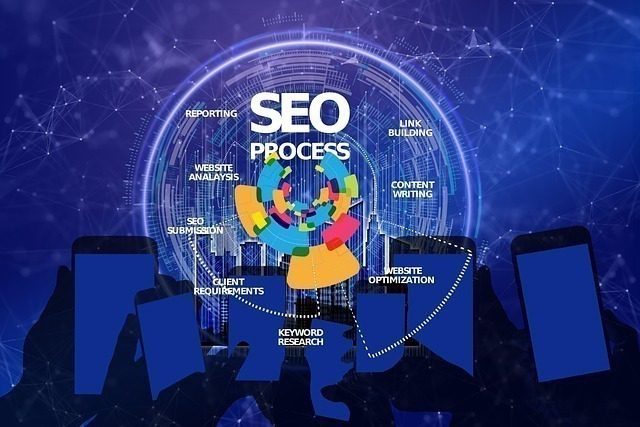The use of Auto-responders for Online...
Read More
Written by Digital Media Zone
How to Understand the Functioning of Search Engines
Gain insights into the functioning of search engines and their pivotal role in driving website visibility.

Understand the two main categories: crawler-based and spider-based engines. Improve your online presence and reach potential customers effectively.
The pivotal role played by search engines in bringing your website to the attention of potential customers makes it crucial to grasp their operational mechanisms and how they deliver information to users.
Essentially, there are two primary categories of search engines, namely those employing automated robots known as crawlers or spiders.

Search engine Spiders
When you submit your website pages to a search engine through their designated submission page, the search engine’s spider meticulously indexes your entire site. A ‘spider’ represents an automated program operated within the search engine system. It traverses a website, thoroughly examining its content, Meta tags, and diligently following the embedded links.
Subsequently, the spider relays this collected information to a central repository, where it is systematically indexed. It also visits every link present on your website, duly indexing those linked sites.
Nevertheless, it’s important to note that certain spiders may limit their indexing to a specific number of pages on your site. Therefore, it is advisable to avoid creating excessively large websites with hundreds of pages.
Periodically, the spider revisits the websites it has indexed to identify any changes in the information. The frequency of these revisits is typically determined by the search engine’s administrators.
Basically a Table of Contents
In many ways, a spider functions akin to a comprehensive book, containing the table of contents, actual content, and references for all the websites it encounters during its search. It has the capability to index an extensive volume of up to a million pages per day.
Prominent examples of search engines utilizing spiders include Excite, Lycos, AltaVista, and Google.
When you utilize a search engine to locate information, it performs a search within the index it has compiled, rather than directly scouring the entire World Wide Web. Diverse search engines generate distinct rankings since each search engine employs its own unique algorithm to navigate through the indices
Mastering this AI app will take Any Business to the Next Level.
Keyword Placement and Frequency
One aspect that search engine algorithms scrutinize is the frequency and placement of keywords on a webpage.
However, they can also identify instances of artificial keyword stuffing or spamdexing. Furthermore, algorithms analyze the manner in which webpages interlink.
By evaluating the interlinking structure, a search engine can determine the subject matter of a page and ascertain whether the keywords on the linked pages align with the keywords on the original page.
Optimizing Keyword Usage - Ensuring Appropriate Keyword Density

Keyword density serves as an indicator of how frequently a chosen keyword appears within a web page. However, it is crucial to avoid excessive repetition of keywords and instead aim for a balanced placement throughout the content.
Overusing keywords by repeating them in every other word or on every line can lead to the rejection of your site as spam or an artificial creation.
Keyword density is typically represented as a percentage of the total word count on a specific web page
Quality over Quantity
For instance, imagine you have a webpage consisting of 100 words (excluding HTML code), and you use a particular keyword five times within the content.
To calculate the keyword density of that page, simply divide the total number of keywords by the total number of words on the webpage.
In this case, it would be 5 divided by 100, resulting in 0.05. Since keyword density is expressed as a percentage, multiply the value by 100, giving you 0.05 x 100 = 5%.
To gain recognition from search engines, it is generally recommended to maintain a keyword density between 3% and 5% and refrain from exceeding this limit.
It’s essential to note that this guideline applies not only to individual pages on your website but also to a set of keywords associated with different products or services.
The keyword density should consistently fall within the range of 3% to 5%.

Here are simple steps to determine the density of keywords:
1. Copy and paste the content of a particular web page into a word-processing software program like Word or Word Perfect.
2. Navigate to the ‘Edit’ menu and select ‘Select All’. Then, proceed to the ‘Tools’ menu and choose ‘Word Count’. Make note of the total number of words present on the page.
3. Utilize the ‘Find’ function in the ‘Edit’ menu. Go to the ‘Replace’ tab and enter the keyword you wish to find. Replace the keyword with the exact same word to avoid altering the text.
4. Upon completing the replacement process, the system will provide a count of how many times the keyword has been used on the page.
5. By using the total word count and the number of keyword occurrences, you can now calculate the keyword density.
Learn more HERE, check out our blog post about the four types of keywords you could target.
Essential Elements for Your Website’s Success
Maximizing Sales on Your Website: Key Strategies for Effective Customer Engagement
When it comes to generating sales on your website, it’s crucial to go beyond focusing solely on homepage design, keywords, and titles.
While search engine optimization is valuable, it’s equally important to capture the interest of customers who visit your site and encourage them to stay.
Here we will explore key strategies for effective customer engagement that can lead to increased sales. From optimizing product information to understanding your target audience and providing sufficient contact information.
These techniques will help you maximize the potential of your website.

I. Optimize Product Information and Accessibility:
Clear and Detailed Information:
To engage customers and motivate them to make a purchase, it’s essential to provide clear, unambiguous information about your products or services.
Dedicate separate pages for each product or service, ensuring that all necessary details are easily accessible.
Consider incorporating well-placed and visible links, allowing customers to navigate to specific product pages and obtain the information they need.
II. Understanding Your Target Audience:
Gathering Customer Insights:
Designing a website that attracts customers requires a deep understanding of their preferences and purchasing habits.
To gain valuable insights, consider sending surveys to your existing clients or requesting feedback as they browse your website.
Ask about their preferences, reasons for choosing your products, and factors influencing their purchasing decisions.
Analyzing credit card records or asking customers to complete a simple contact form can provide a deeper understanding of their demographic information.
III. Providing Ample Contact Information:
Accessibility and Communication Channels:
To establish trust and facilitate customer inquiries, it’s crucial to provide easily accessible contact information throughout your website.
Include a mailing address, telephone number, and an email address for customers to reach out to you. This ensures customers can contact you for sales inquiries, general information, or technical support.
Consider forwarding your email to another address if you don’t frequently check your website mailbox.
Mastering this AI app will take Any Business to the Next Level.
IV. Offering Convenient Payment Options:
Multiple Payment Methods:
To streamline online purchases and accommodate customer preferences, it’s important to offer multiple payment options. Include credit card payments, PayPal, and other online payment services to provide flexibility and convenience for customers.
Conclusion:
While search engine optimization and higher rankings are important for attracting customers to your website, engaging them effectively is equally crucial for driving sales.
By optimizing product information, understanding your target audience, providing sufficient contact information, and offering convenient payment options, you can enhance customer engagement and maximize the potential of your website to generate sales.
Remember, a well-designed website that meets the needs and preferences of your customers is key to success in the online marketplace.

We appreciate you taking the time to read our content.
We hope you found it informative and valuable.
If you enjoyed this article, consider subscribing and following us on social media to stay updated with the latest insights and updates.

By entering your email, you agree to receive our emails, including marketing emails, in line with our Privacy Policy.







